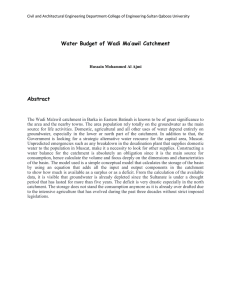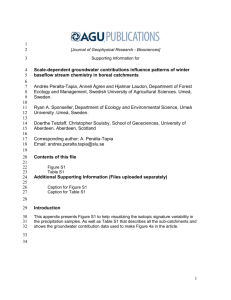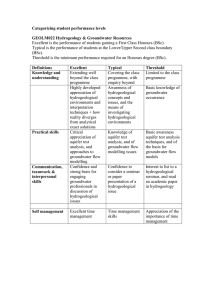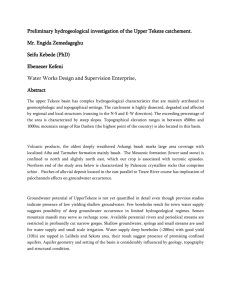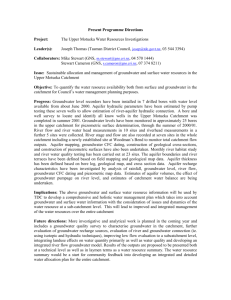Assessing the Impact of Climate Change on Groundwater in a
advertisement
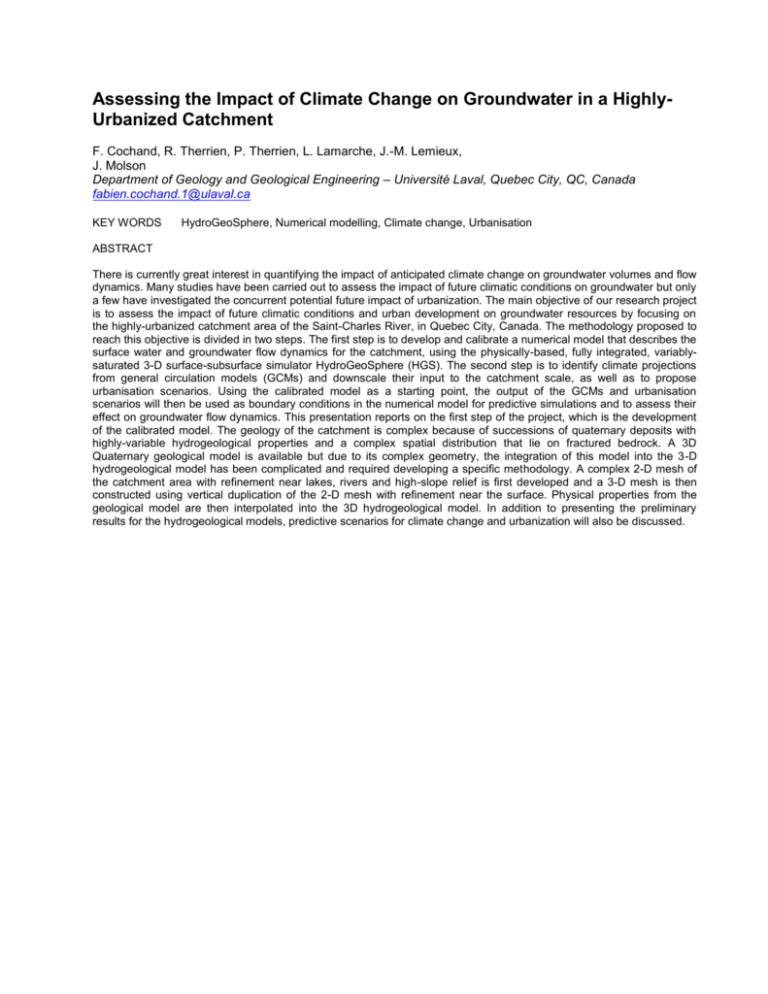
Assessing the Impact of Climate Change on Groundwater in a HighlyUrbanized Catchment F. Cochand, R. Therrien, P. Therrien, L. Lamarche, J.-M. Lemieux, J. Molson Department of Geology and Geological Engineering – Université Laval, Quebec City, QC, Canada fabien.cochand.1@ulaval.ca KEY WORDS HydroGeoSphere, Numerical modelling, Climate change, Urbanisation ABSTRACT There is currently great interest in quantifying the impact of anticipated climate change on groundwater volumes and flow dynamics. Many studies have been carried out to assess the impact of future climatic conditions on groundwater but only a few have investigated the concurrent potential future impact of urbanization. The main objective of our research project is to assess the impact of future climatic conditions and urban development on groundwater resources by focusing on the highly-urbanized catchment area of the Saint-Charles River, in Quebec City, Canada. The methodology proposed to reach this objective is divided in two steps. The first step is to develop and calibrate a numerical model that describes the surface water and groundwater flow dynamics for the catchment, using the physically-based, fully integrated, variablysaturated 3-D surface-subsurface simulator HydroGeoSphere (HGS). The second step is to identify climate projections from general circulation models (GCMs) and downscale their input to the catchment scale, as well as to propose urbanisation scenarios. Using the calibrated model as a starting point, the output of the GCMs and urbanisation scenarios will then be used as boundary conditions in the numerical model for predictive simulations and to assess their effect on groundwater flow dynamics. This presentation reports on the first step of the project, which is the development of the calibrated model. The geology of the catchment is complex because of successions of quaternary deposits with highly-variable hydrogeological properties and a complex spatial distribution that lie on fractured bedrock. A 3D Quaternary geological model is available but due to its complex geometry, the integration of this model into the 3-D hydrogeological model has been complicated and required developing a specific methodology. A complex 2-D mesh of the catchment area with refinement near lakes, rivers and high-slope relief is first developed and a 3-D mesh is then constructed using vertical duplication of the 2-D mesh with refinement near the surface. Physical properties from the geological model are then interpolated into the 3D hydrogeological model. In addition to presenting the preliminary results for the hydrogeological models, predictive scenarios for climate change and urbanization will also be discussed.

